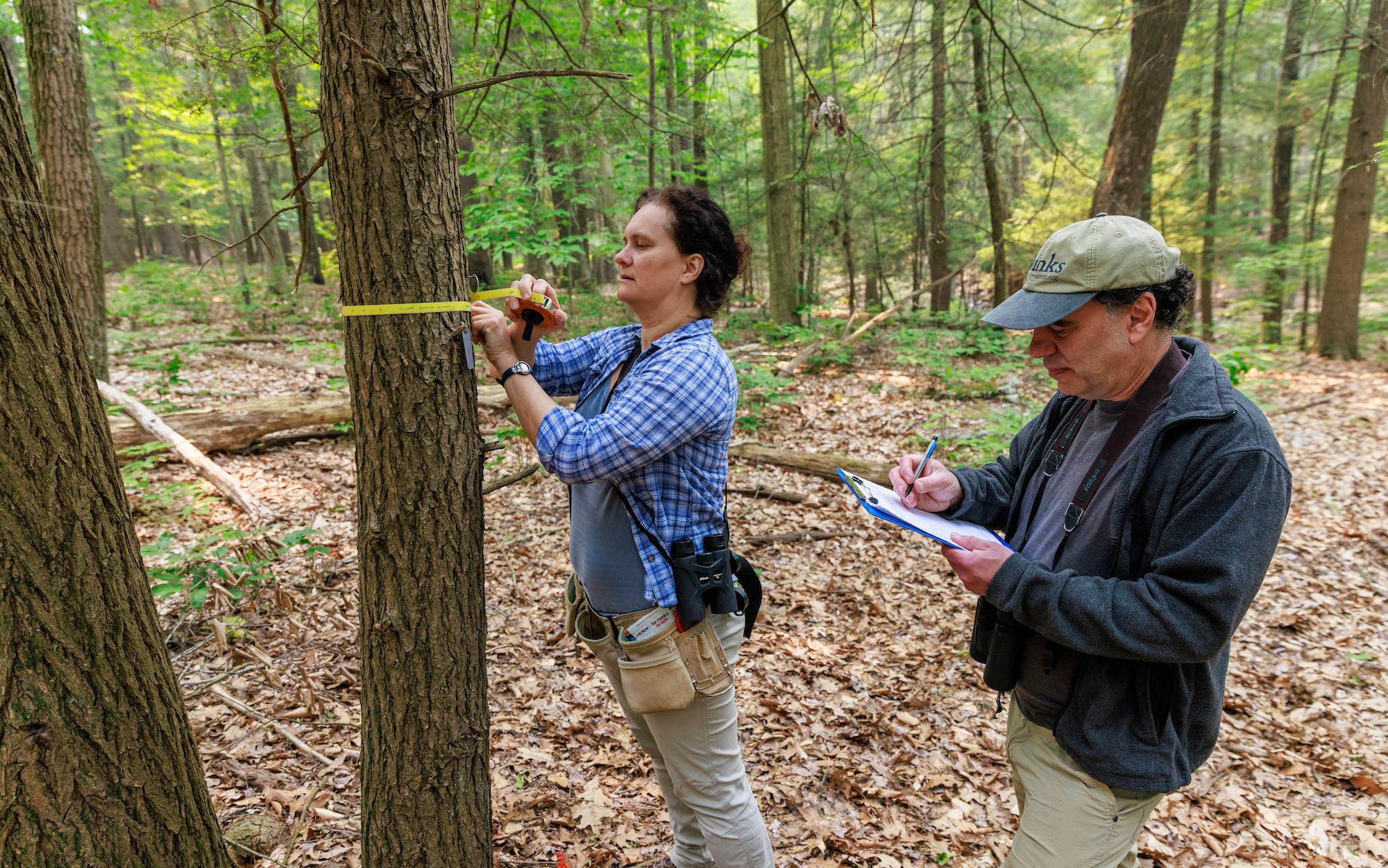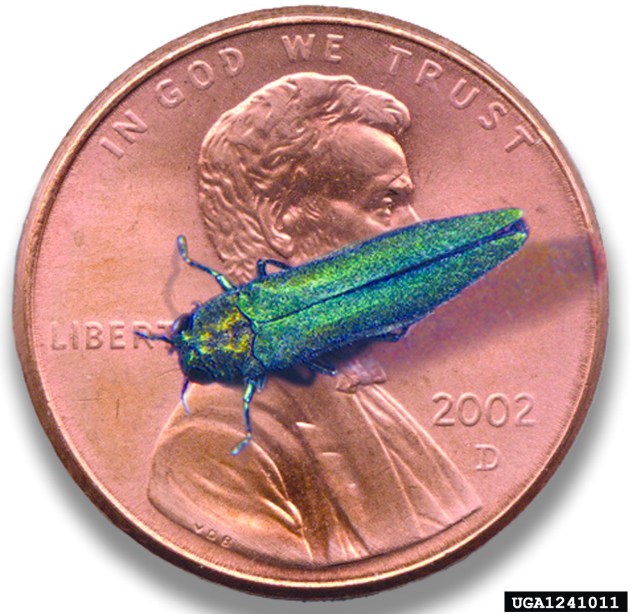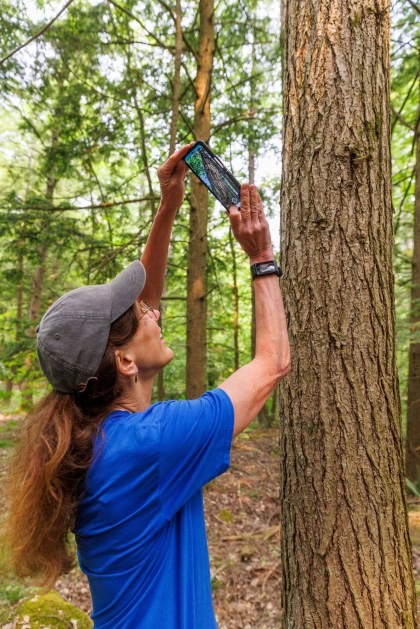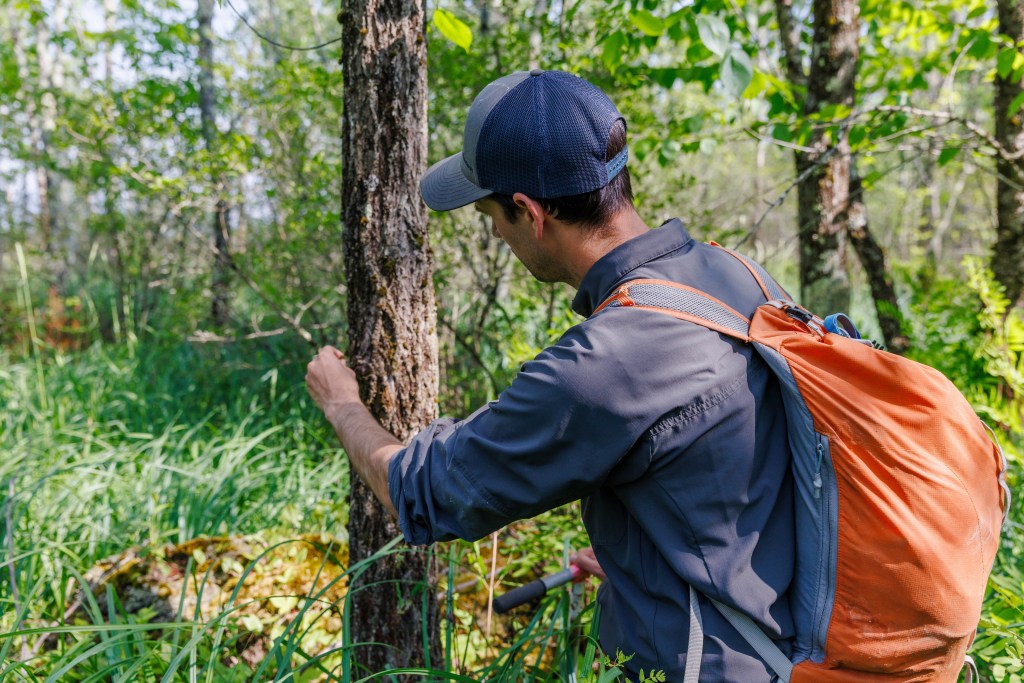As some of North America’s iconic tree species are severely threatened by invasive forest pests and disease, scientists are finding hope in the rare individual trees that somehow manage to stay healthy long after the initial damage is done.
Often surrounded by other trees of the same species that are dead or dying, these trees persist. Their resilience in the face of deadly insect or disease attack likely means that something in their genetic makeup gives their defense system a better chance than their more rapidly dying neighboring trees.
Scientists call them “lingering trees,” a term first coined by USDA Forest Service researchers who discovered individual healthy ash trees in the midst of other ash that had already been killed by emerald ash borer. The emerald ash borer is a non-native, invasive beetle that has been spreading across North America, killing vast numbers of ash trees since it was first found in the Detroit area in 2002.
Scientists aim to find individual lingering trees across their natural habitats and carefully breed each type in research nurseries to provide saplings or seed that are resistant to their respective pests or pathogens. This work brings hope for imperiled trees like ash, Eastern hemlock, American beech, elm and chestnut.
But how can scientists find those rare lingering trees? They are a tiny fraction of North America’s trees, found in all kinds of places- whether in a sprawling forest, city park, or a suburban backyard.
Thanks to the hard work of dozens of scientists and foresters across the U.S., there are several different ways that these trees can be found, tagged and used to inform tree resistance breeding efforts.

Finding a Tree: Using TreeSnap for 16 Tree Species
First, there’s a mobile app called TreeSnap, developed by a team of researchers from the University of Tennessee and University of Kentucky.
The app was originally developed to help tag individual American chestnut trees that manage to beat the chestnut blight—a tree disease that has wiped out nearly all mature chestnut trees that were once common and magnificent throughout North America.
TreeSnap users can still help locate lingering American chestnut trees, but the app has since evolved to include the trees that The Nature Conservancy, Forest Service and other partners are trying to save: American beech, American elm, Eastern hemlock and several species of ash. In total, the app now can gather data on 16 at-risk species of trees.

“We really want to find those individual trees out in the wild that have survived,” says Dr. Meg Staton, associate professor at the University of Tennessee at Knoxville and a principal investigator for TreeSnap.
The effort to locate healthy specimens is especially urgent for North America’s ash species because of emerald ash borer’s vigorous and persistent spread. Staton and other researchers believe those lingering ash trees may hold the genetic clues to breeding trees that can effectively defend themselves against emerald ash borer.
But many lingering ash only persist for a few years past their neighboring trees, so the race is on to find them before they eventually die, too.
“For ash, we have good preliminary data that there is a genetic basis that these lingering individuals are the reservoir of genetic diversity to one day restore the species,” Staton says. “So, the more that everyday tree enthusiasts can help us find candidate trees from different locations, the more likely it is that we can really restore the species with a good, solid genetic diversity base, and then help these species be successful again.”
In theory, the same principles apply to all tree species imperiled by invasive forest pests, like beech, chestnut, elm, and hemlock.
But each tree species is unique, and the pests and pathogens that affect them are each themselves distinct, and therefore the scientific community is at different points along the path to breeding resistant trees for each of these species.

Community Scientists and TreeSnap
In the search for lingering trees, researchers can’t possibly cover the wide geographic range of these tree species. But people with a basic knowledge of tree ID and some background training can play an important role in the search.
On one end of the spectrum, that includes people who are simply tree-lovers, or birders or hikers who also know their trees. On the other end, it could include professional foresters, arborists, or land managers.
Here’s how the TreeSnap app works. Let’s say you’re hiking in the woods, and you see a healthy Eastern hemlock tree in a place where all the other hemlocks look really terrible; maybe some have fully died from hemlock woolly adelgid.
You open the TreeSnap app on your phone and select “hemlock” among the choices of other trees. If your hemlock meets the definitions of a true lingering hemlock, you fill out the fields, carefully take some good photos, add comments, and submit your entry.
Submitted entries are then reviewed by a team of researchers. If it’s an intriguing entry, a researcher may contact you with some more questions and may even visit the site.
It’s important to know that TreeSnap developers ask that users submit entries on public land or land that they own—and the locations are anonymized to protect potentially valuable trees. Only qualified and vetted tree researchers get the full location information.
Ellen Crocker, an extension specialist at the University of Kentucky who also helped develop TreeSnap, made this handy training video.
Monitoring and Managing Ash… and More
In the Northeastern U.S., citizen scientists, forest landowners, and public lands managers can use a variety of tools within the Monitoring and Managing Ash (MaMA) program to collect rigorous data that enables identification of lingering trees.
MaMA was developed by the Ecological Research Institute in close collaboration with USDA Forest Service researchers and it includes four citizen science projects that help identify where and when to search for lingering ash, allowing these trees to be found more efficiently. These projects, all on the Anecdata citizen-science platform, include: ash and emerald ash borer surveys; lingering ash search; monitoring plots; and rapid ash mortality assessment.

Crucially, in the MaMA program, the search for lingering ash can be incorporated into overall ash management strategies. With funding from The Nature Conservancy, the MaMA projects are now expanding farther across New York and New England than ever before—and they’ve already enabled the collection of samples that will be used to create a new experimental tree nursery in New York.
In 2023, a set of protocols similar to MaMA was developed specifically for the needs and range of hemlock trees. This new research tool will allow for a systematic search for lingering hemlock across a variety of landscapes.
Other efforts have located many long-term survivor elm and beech. For all these efforts to succeed, monitoring plots will need to be created and maintained all across the range of each species of tree – and they’ll need to be incorporated into forestry planning across both private and public forested landscapes.
TreeSnap is available for download on the Apple App Store or Google Play. Citizen scientists, forestry professionals and landowners interested in Monitoring and Managing Ash (MaMA) can learn more by visiting www.monitoringash.org.




I’ll wait for a good report to download the app, though I think it’s a great idea. We don’t have any of the study trees in my ecosystem (pine and pinon/juniper at 7,000 to 9,000 feet), but I’ve been watching our conifers, especially the spruces and Douglas firs, dying of drought and rising heat for a long time, and I can now tell whether they are also dying from borers just by looking at them. Now I should ask the Extension Officer if there’s a research nursery locally.
TreeSnap has been around since 2017 with thousands of users and tens of thousands of trees. Please feel free to leave a positive review if you enjoy using it!
I’ve just downloaded the app, and gave a cursory look at the reviews. They’re not good. Some are calling this abandon ware. I hope that’s not the case.